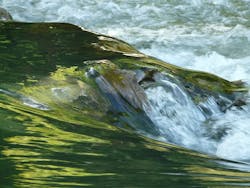Groundwater Study Shows Reduced Flow
New research from the University of Arizona claims groundwater pumping contributed 50% to stream flow declines in some U.S. rivers in the last century. According to the University of Arizona News, the study contains implications for managing U.S. water resources.
Regulation of groundwater and surface water is different depending on the state. For example, Western states like Arizona manage the two separately.
"We're trying to figure out how that groundwater depletion has actually reshaped our hydrologic landscape," said Laura Condon, one author of the study and a UA assistant professor of hydrology and atmospheric sciences, to UA News. "What does that mean for us, and what are the lasting impacts?"
Condon explained that the study looks at past groundwater pumping in the U.S. She said previous research studies examined surface water affected by groundwater pumping at a smaller scale.
The U.S. Geological Survey calculated groundwater loss during the 20th century as 800 cu kilometers, according to UA News.
"We showed that because we’ve taken all of this water out of the subsurface, that has had really big impacts on how our land surface hydrology behaves," Condon said to UA News. "We can show in our simulation that by taking out this groundwater, we have dried up lots of small streams across the U.S. because those streams would have been fed by groundwater discharge."
The article, "Simulating the sensitivity of evapotranspiration and streamflow to large-scale groundwater depletion" was published June 19 in Science Advances. According to UA News, U.S. Department of Energy funded the research.
“With this study, we not only have been able to reconstruct the impact of historical pumping on stream depletion, but we can also use it in a predictive sense, to help sustainably manage groundwater pumping moving forward,” said Reed Maxwell of the Colorado School of Mines, co-author of the study, to UA News.
The full study can be read here.
